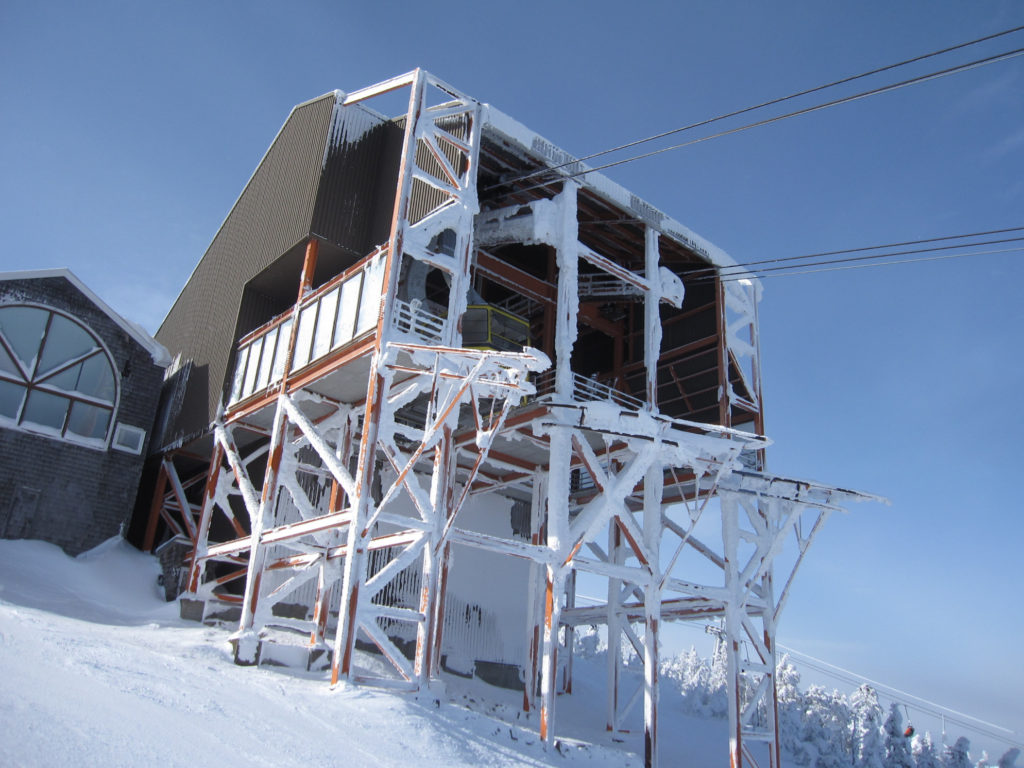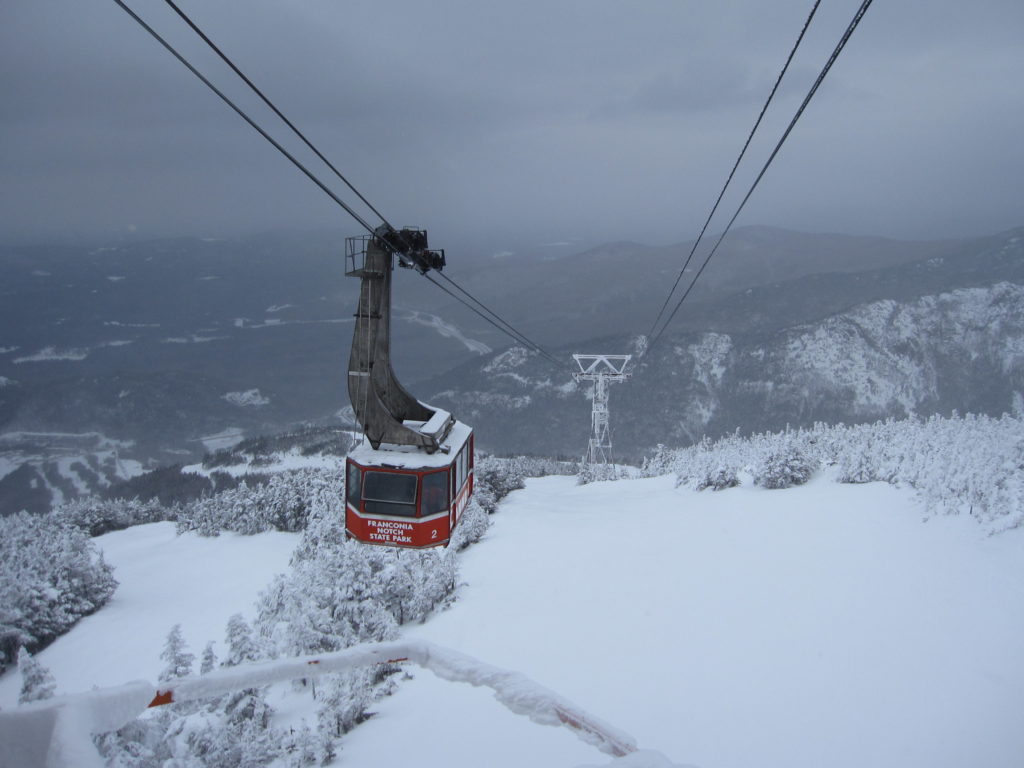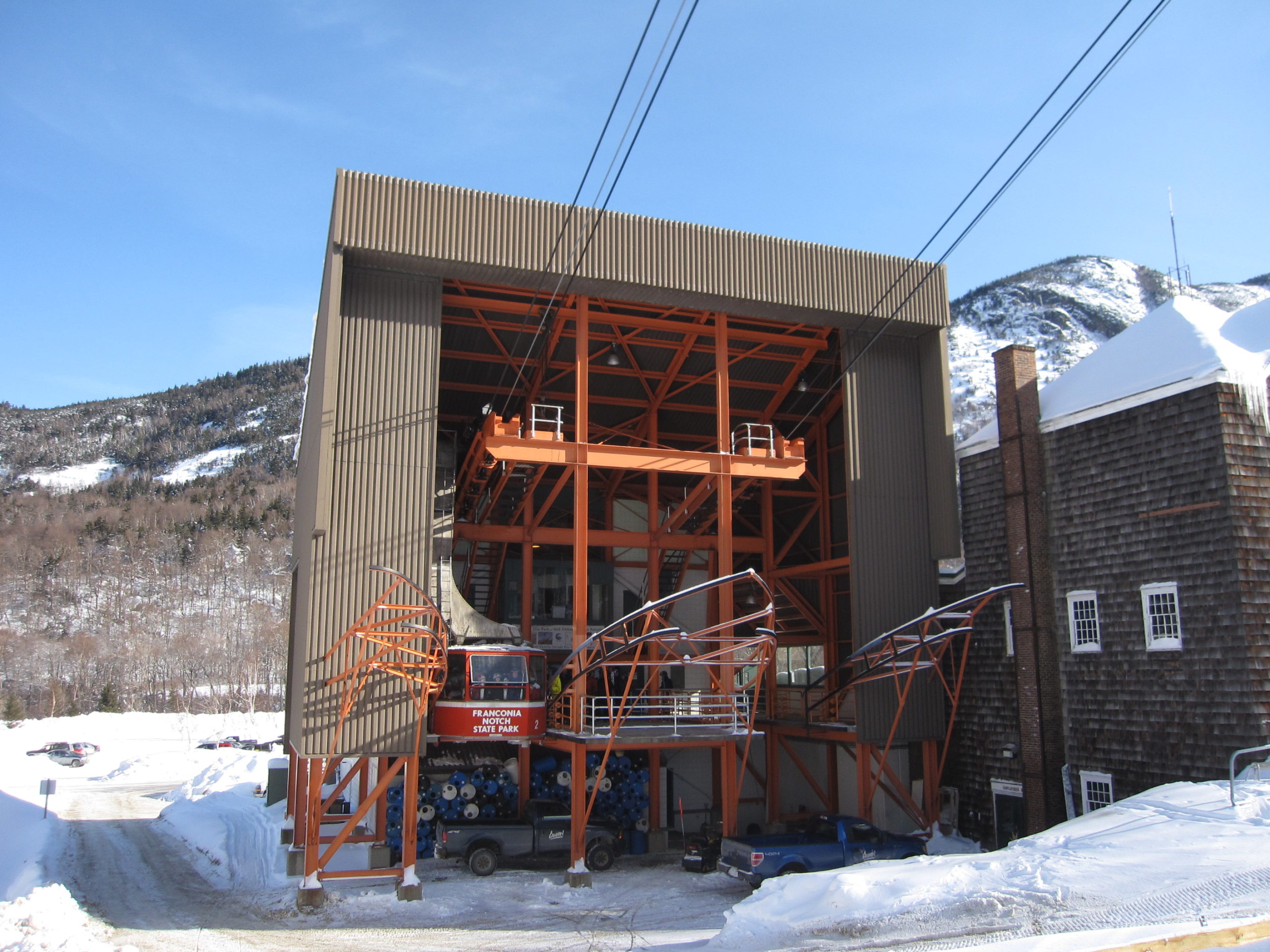Prologue
Why? What’s wrong with you? Why are you reviewing a cable car?!?!? In the “mission statement”, I said that I’ll review everything that’s mechanically or linguistically a tram, and yes, that includes aerial trams, as those are trams for some reason. So, the next time you build a cable car (or any kind of anything that you dare call a tram), name it a tram or not depending on whether you want me to review it, though I kindly ask you to not do weird linguistical stuff and call it a tram only if it is some sort of genuine train in the sense commonly accepted by railfan/transit communities.
Frankly, I chose this one specifically (out of cable cars) as 1. It is one of the two true aerial trams in New England, and 2. I have been to it myself and can verify its majesty.1
If you don’t know about Tram Review, you can visit the about page. 😄
Overview
This… uhm, tramway is technically located on the southern edge of the municipality of Franconia in the state of New Hampshire in the northeastern United States, and because this tells you nothing, I’ll try to embed a map for you.
A map for you:
Either way, a better way to represent the location would be to say that this tram climbs Cannon Mountain which is located slightly to the north of Franconia Notch on I-93 in the Northwestern White Mountains of New Hampshire, in the northern Appalachians.
The length of the tram is approximately 1.5 kilometers2 It is a double span installation (double track in railway terms! 😂). Electrification isn’t particularly applicable to this tram,3 but rolling stock is. So… The rolling stock on this system (🤣) consists of a fleet of two (2) 70 passenger, inward boarding4 cabins made by CWA in 1979, with this type relatively typical of CWA cabins of the time and can be spotted across many aerial tram installations around the world. The current cabins replaced PCC streetcars were installed together with the cable in 1980, and replaced an earlier tram from 1938.
With regards to a schedule, this system might actually qualify as rapid transit, as cabins cannot be taken off the line and do not operate independently of each other, frequency is consistent and probably relatively high as this tram forms the backbone of a ski area, and also climbs up a well known mountain in a relatively touristic area.
Uh, fares? I mean… this ain’t a transit service but a tourist attraction, and a ski lift. An average one day ski ticket would’ve set you back $89 last year5 according to New England Ski History. But remember that this is for the ski area and not the tram itself, and that ski tickets work in a pretty convoluted way which means most people don’t pay the whole $89. Anyway, if you want to only ride the tram for sightseeing it’d cost you $19 in the summer of 2019.6 As you can see, that is cheaper, and for sightseeing it makes sense, though it should not be looked upon as transit…
History
Tram I
The histories of aerial trams are noticeably simpler compared to standard trams, but are complex compared to ski lifts and often stretch a long way to the past (still not beating streetcar systems in complexity though).
The beginning of development on Cannon Mountain dates back to 1932 when the Richard Taft ski trail was cut by the Civilian Conservation Corps:
Named after the builder of the Profile House in Franconia Notch, the Richard Taft Trail was the first CCC ski trail cut on Cannon Mountain. Designed by Duke Dimitri von Leuchtenberg, fundraising was conducted by Katharine Peckett. The trail was cut in the summer and fall of 1932 and first skied in February of 1933.
New England Ski History on Cannon Mountain CCC Trails
As was typical of early ski trails, the trail was hike-up-to and didn’t particularly belong to an establishment, as ski lift technology was not yet developed enough for large scale ski area development.7
In the mid 30’s, ideas of a lift served ski area on Cannon Mountain began to surface. In June 1937 the bill for the construction of an aerial tram on Cannon Mountain was signed. American Steel & Wire Co.[FR] was contracted, with the CCC “assisting with related facility developments.” – NESH
The tramway opened in June 1938, with the first season of skiing being the 1938-39 season. The operation, being tram based is more typical of European resorts, and continues to be rare in North America.
Being the first aerial tram in North America, American Steel & Wire used a license from German company (and cableway pioneer) Bleichart[FR]. It is similar to many trams constructed in Europe at the time, notably the use of iconic 12 sided Bleichart cabins, some of which still operate in Europe today. The cabins were originally painted dark green, and were repainted white with a red stripe sometime in the 70’s. They were also fitted with large front headlights.
Throughout the 50’s and 60’s the ski area continued to develop around the tram, and as early as 1951 the tram was being called inadequate and low capacity for its role in the ski area. In the 50’s the problem was solved by adding additional lifts around the tram… Calls to replace the tram increased in the mid 70’s, and it was cited as causing financial harm to the area (which was state owned, meaning more bureaucracy of course).
Tram II
The approval for the construction of a new $3.7 million aerial tram was received in 1978. Costs quickly ballooned, however, with Agudio[FR] of Italy coming with the lowest bid at $3.8 million, and costs eventually becoming $4.6 million. This may seem low by transit standards, but remember that cable transport tends to be in this price range so I wouldn’t find this too high or too low8 of a cost.

Construction on the new tram began in summer of 1978 and finished in the spring of 1980. The new tram paralleled the old tram, and they ran together for a while before the latter being dismantled thereafter.
It seems like there was some maintenance going on around the turn on the century, but other than that not much has happened since. The tramway continues to serve as the workhorse of a large, state owned ski area in the heart of New Hampshire. As aerial trams remain a rarity in the US, it is always a nice experience to be able to see/ride such interesting machinery.
Analyzation
This clearly being a tourist9 oriented system it would be hard to apply my format to it, but I’ll try as best as I can.
Frequency: Considering the tram runs often it would be hard to say it cannot function as rapid transit if a city were to appear at the top of the mountain, but that seems unlikely.
Intermodality: There’s nothing to transfer to. Although, from a skiing perspective️, the tram is fairly isolated from the rest of the resort, being located in a corner. Being bottom-to-top (the only lift to do so) it is probably pretty useful moving crowds up the mountain.
Character: Not Applicable 🤷♂️
Actually, you could say that the line is elevated all the way, and has station buildings… That’d make it a people mover… but alas, not everything must be analyzed.
Type
This is certainly #notatram, of the subcategory Very, but you could probably still pull off calling it Light Rail… right?
Of the standard categories it also earns Tourist, because it does in fact serve primarily tourists.

We hope you have enjoyed this post, if you have any questions, comments, feedback? please do not hesitate to comment or contact us.
Sources
The images have been credited to their respective owners in the caption of each image
Due to the unprofessional nature of this blog, sources will be cited in a simple manner, with no formats yet. Sources used are:
- Liftblog.com
- Google Maps
- New England Ski History
- The website of Cannon Mountain
Major thanks to Peter Landsman of Liftblog.com for allowing me to use their images.

